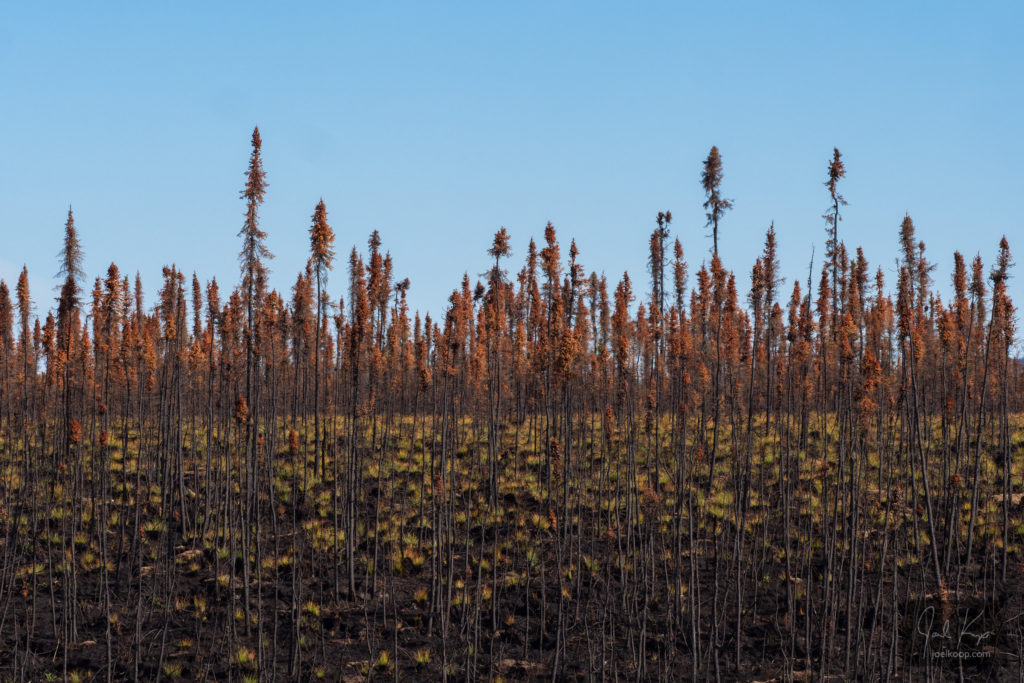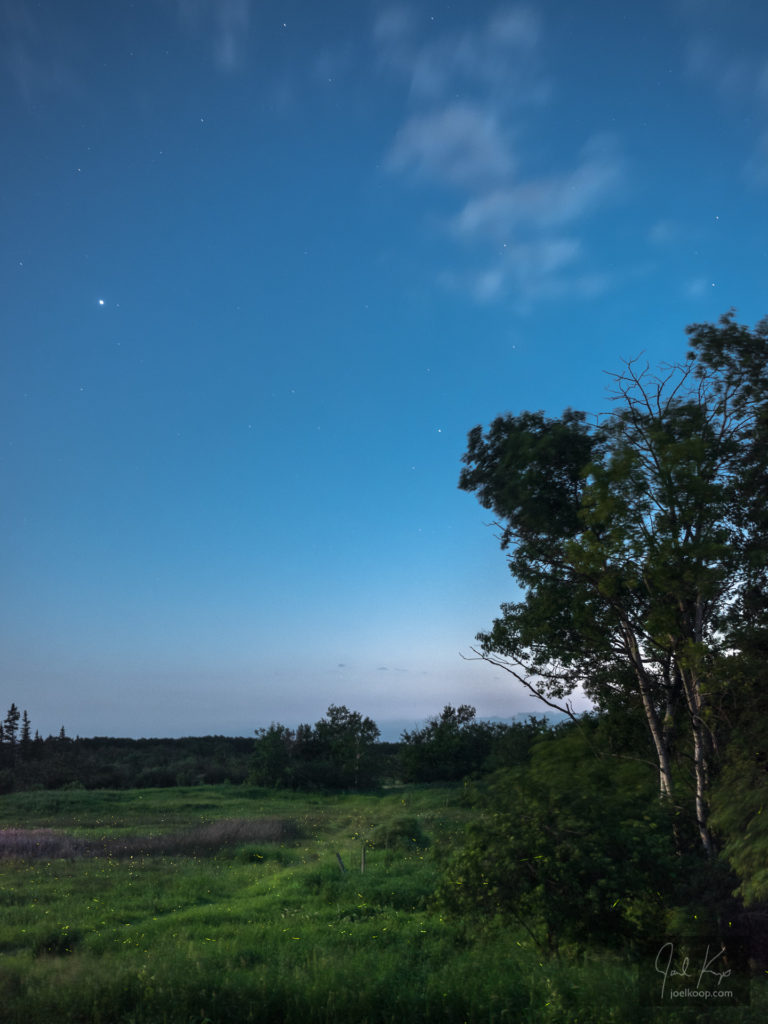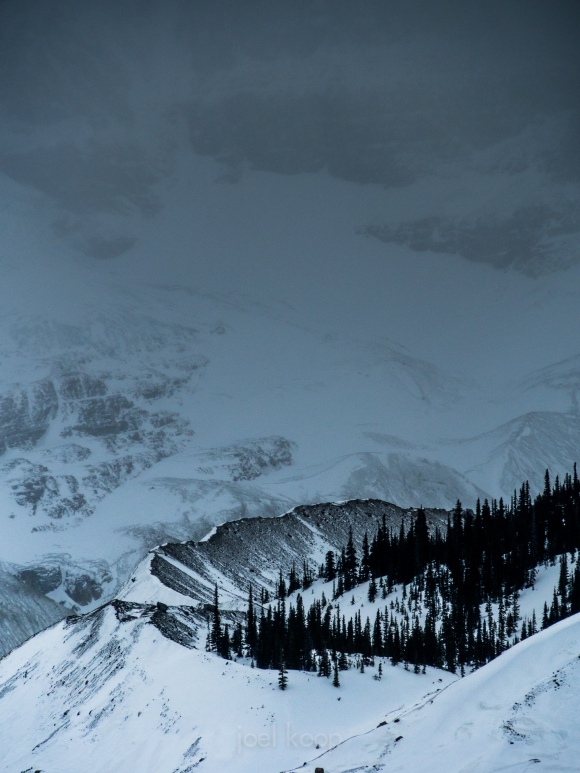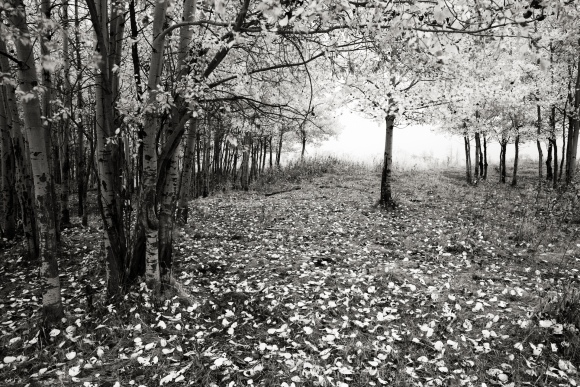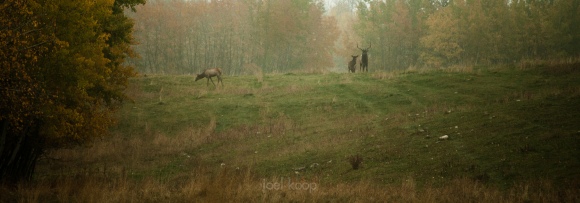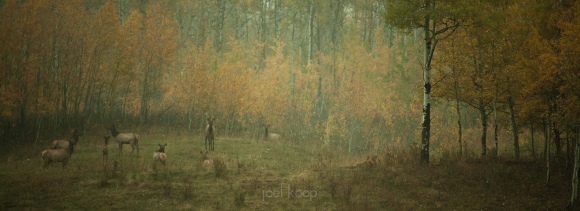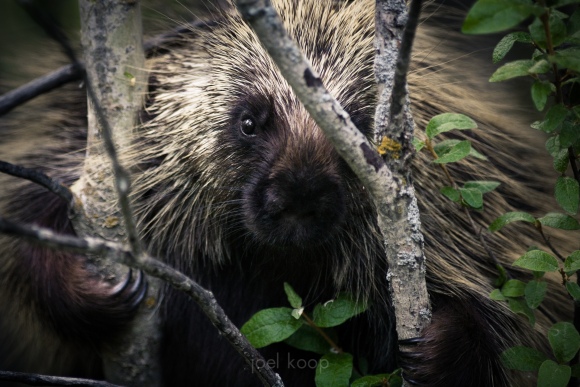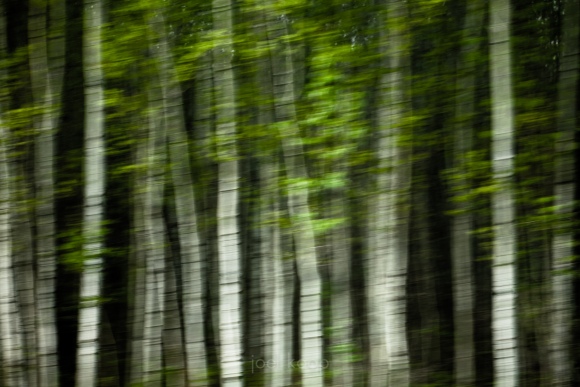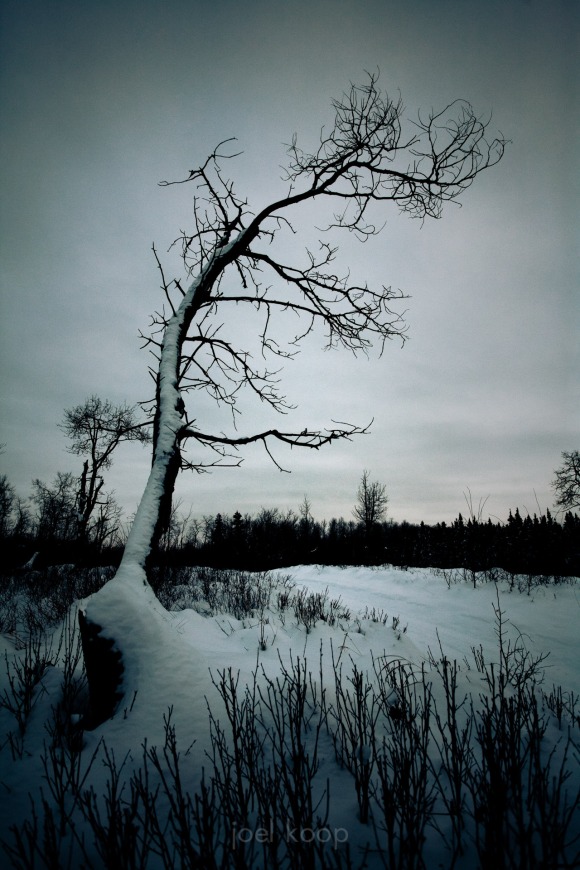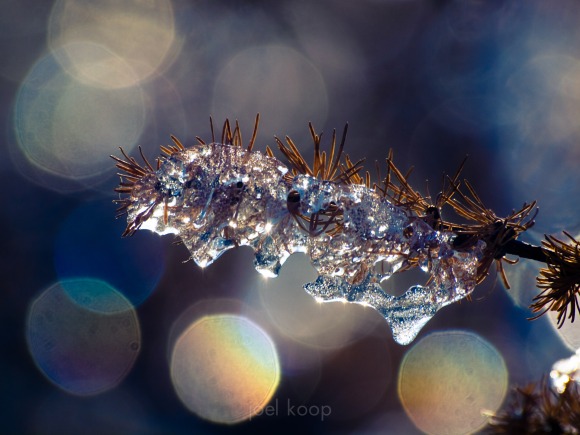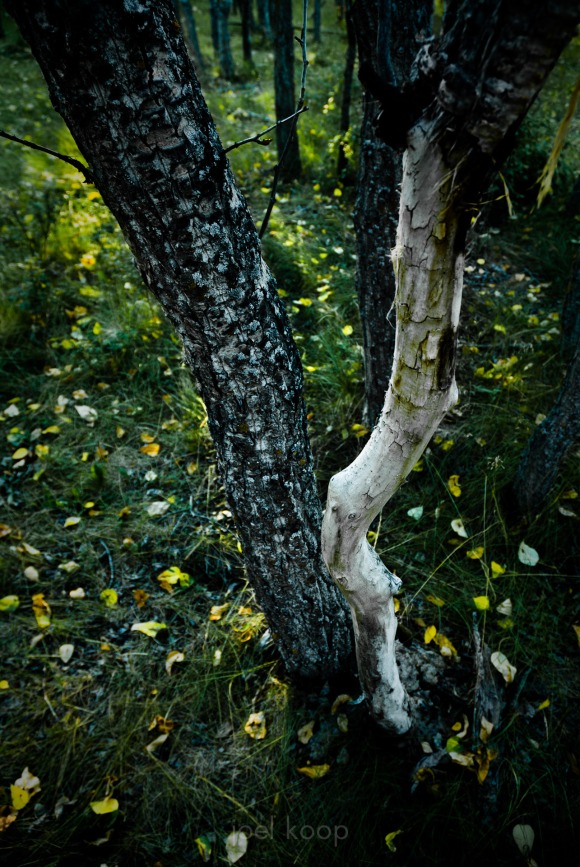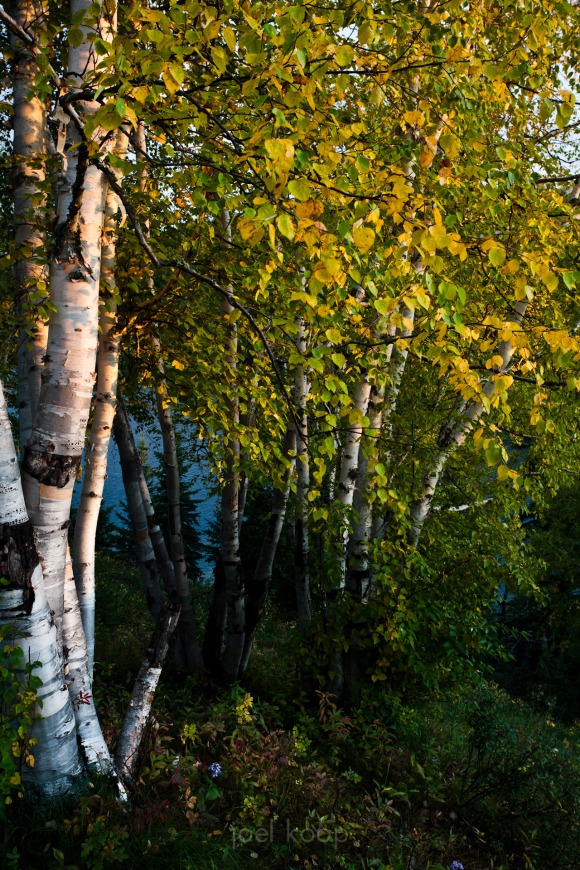This photo was taken in Cooking Lake Provincial Rec Area. Actually the name is “Cooking Lake – Blackfoot Grazing, Wildlife Provincial Recreation Area”, but that’s a ridiculously long name, and I don’t intend on typing it out every time I mention it. Anyway, this is the area just south of Elk Island National Park. It’s almost exactly the same, except it has a few fields and no bison. And you don’t have to pay to get in. All in all, a great area to go hiking.
This was an overcast day, and a little misty. There were water droplets on the grass and a bit of a breeze rustling the leaves too. It was in this muffled darkening atmosphere that I first noticed the elk. The bull was watching me, with his herd off to the side, behind a copse of apsen.
I crouched down and watched them for a while. A calf was still nursing, and many of the elk were grazing, but the bull kept watching me. As the light faded along with my vision, the herd moved off into the trees. That first photo was taken in the trees where the elk disappeared into, after it had become quite dark.
